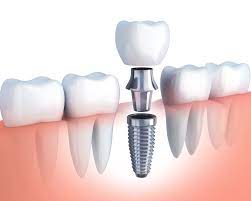Dental implants are a long-term solution for replacing missing teeth, offering stability and a natural appearance. Many people consider them because they improve chewing function and restore confidence in daily interactions.
Although the benefits are clear, the overall cost of dental implants often becomes a barrier for patients. Understanding the various factors that influence pricing and learning how to manage the cost makes this treatment more approachable.
Factors That Influence the Cost of Dental Implants
Dental implants costs vary depending on a range of circumstances. One of the most significant is the number of implants needed. A single tooth implant costs much less than a full-mouth reconstruction, which typically involves multiple implants and additional hardware. The materials used in the implant—such as titanium or zirconia—can also affect the overall expense.
Geographic location plays a part as well. Dental procedures in urban centers or higher-cost-of-living areas generally come with higher price tags. A dentist’s experience, their specialized training in implant dentistry, and the reputation of the clinic may also influence how much patients can expect to pay.
In some cases, a patient may need preliminary procedures like bone grafts or sinus lifts before receiving an implant. These procedures are not included in the base implant price but can be necessary for successful results. Each step adds time and cost to the full treatment plan.
Breaking Down the Full Cost of Treatment
The total price of dental implants often includes several phases. The consultation, diagnostic imaging, surgical placement of the implant, attachment of the abutment, and final crown all carry individual costs. While patients sometimes see advertisements for low-cost implants, these often omit one or more components of comprehensive care.
When priced together, a single implant can range between $3,000 and $5,000. For multiple implants, this number rises significantly. However, these estimates vary, and some dental practices offer bundled pricing or tiered plans for patients undergoing more extensive procedures.
Financial Options and Payment Plans
Because dental implants involve a high upfront cost, many patients explore financing options. Some dental offices provide in-house payment plans, allowing patients to split the cost over several months. Third-party healthcare financing is another avenue, offering low- or no-interest plans depending on credit.
Dental discount plans are a useful alternative for those without insurance. While these do not operate like traditional insurance, they offer reduced rates on various dental procedures—including implants—at participating providers.
Patients with dental insurance may receive partial coverage, particularly for diagnostic or preparatory procedures. Most insurance plans still classify dental implants as elective, which limits direct reimbursement. However, if the implant is deemed medically necessary—such as after a traumatic injury—there may be exceptions worth discussing with the provider.
Maximizing Value and Long-Term Benefits
While dental implants are expensive, they can offer cost savings over time. Compared to bridges or dentures, implants typically require fewer replacements and less maintenance. Their durability means fewer return visits, reducing overall lifetime costs related to tooth replacement.
Patients who commit to proper hygiene, regular dental visits, and consistent oral care protect their investment. Long-lasting results are possible when implants are cared for well and supported by healthy gum and bone tissue.
Discuss Options With Your Dental Provider
Before beginning treatment, speak openly with your dentist about the total estimated cost, financing options, and any less costly alternatives. A well-informed decision starts with transparency and realistic planning. By taking the time to ask questions and explore every option, patients can move forward with confidence in their dental care and financial choices.
Related Articles
Understanding the Impact of Allergies on Your Sleep and Health
Differences Between a Pediatric Root Canal and an Adult Root Canal
What You Need To Know About Varithena for Treating Varicose Veins





